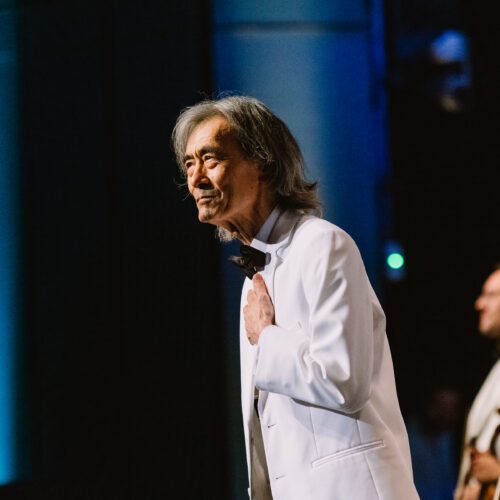As rain, wind and cold descended on the evening of December 11, a small crowd gathered, braving the inclement weather to hear and see the instrumental playing of the six semi-finalists in this year’s Prix du violon d’or.
At the end of the semi-final round, violinists Jueun Lee, Joey Manchin and Justin Saulnier were recommended by the jury to move on to the final round on Friday, December 13.
Their performances respectively highlighted qualities of playing, interpretation and technical mastery in diverse programs of contrasting dynamics. South Korean-born Jueun Lee, accompanied on piano by Itamar Prag, drew the audience into the sparkling world of Mozart with the Sonata for Violin and Piano No. 22, and into the folkloric world of Edvard Grieg with the Violin Sonata No. 2 in G major. In addition to her clear sound and precise articulation, it was the young performer’s stage presence and energy, as well as her apparent complicity with her pianist, that captured the audience’s attention.
Joey Manchin offered a heartfelt, polished interpretation of the second movement of Beethoven’s Piano Sonata No. 2 in A major, Paul Hindemith’s Sonata for Solo Violin No. 2 and the first two movements of César Franck’s Sonata in A major. The intimate dialogue between piano and violin in Beethoven’s work highlighted the purity of sound and clarity of lines exchanged between the two instrumentalists. Plunging the audience into a completely different aesthetic, Hindemith’s sonata was packed with chromatic lines and different playing techniques, which Manchin was able to demonstrate. In Franck’s sonata, accompanied by Veola Sun, he expressed in the work’s vaporous sonorities a frank control of the different dynamics, moving from languorous lines to lively, animated passages.
Justin Saulnier shone with pure lines and limpid musical discourse in Schubert’s Sonatina in D major, while Paganini’s short Caprice No. 17 in E flat major, with its velocity of violin lines, showcased his technical mastery. He was also the only semi-finalist to include two pieces by contemporary composers in his program: Ana Sokolovic’s Chant and the third of the Sonata for violin and piano by composer and conductor Dinuk Wijeratne. The presentation of this type of repertoire, the antithesis of the majority of the works we heard during the evening, provided a welcome dose of variety, and demonstrated Saulnier’s abilities in this type of musical language and discourse, where he was supported by Gaspard Tanguay-Labrosse.
The three competitors who didn’t make the cut have nothing to be ashamed of. Violist Alexander Beggs impressed us with his warm, woody and stable sound. His program, consisting of Franz Joseph Haydn’s Divertimento in D major – in an arrangement by Gregor Piatigorsky – and Rebecca Clarke’s Sonata for Viola and Piano, was the most aesthetically introspective. This enhanced her musicality, but perhaps did her virtuosity and contrasts a disservice. American-Japanese violinist Satoka Abo opted for a program in which technical virtuosity took precedence. Her performances of Brahms’ Sonatensatz and Franz Waxman’s Carmen-Fantaisie were high-flying moments, but lacked precision in places. The sparkling first movement of Mozart’s Sonata in B flat major and Amy Beach’s warm Romance brought contrasts and calm to his explosive program. Finally, cellist François Lamontagne offered a contrasting performance with an excerpt from Beethoven’s Cello Sonata No. 3 and Gaspar Cassado’s Suite for Solo Cello, which was beautifully intense but could have been more danceable.
The final of the Prix du violon d’or 2024-2025 will take place on Friday December 13 at 7pm in the Tanna Schulich Hall.
FREE ADMISSION
To view the webcast, click here
























